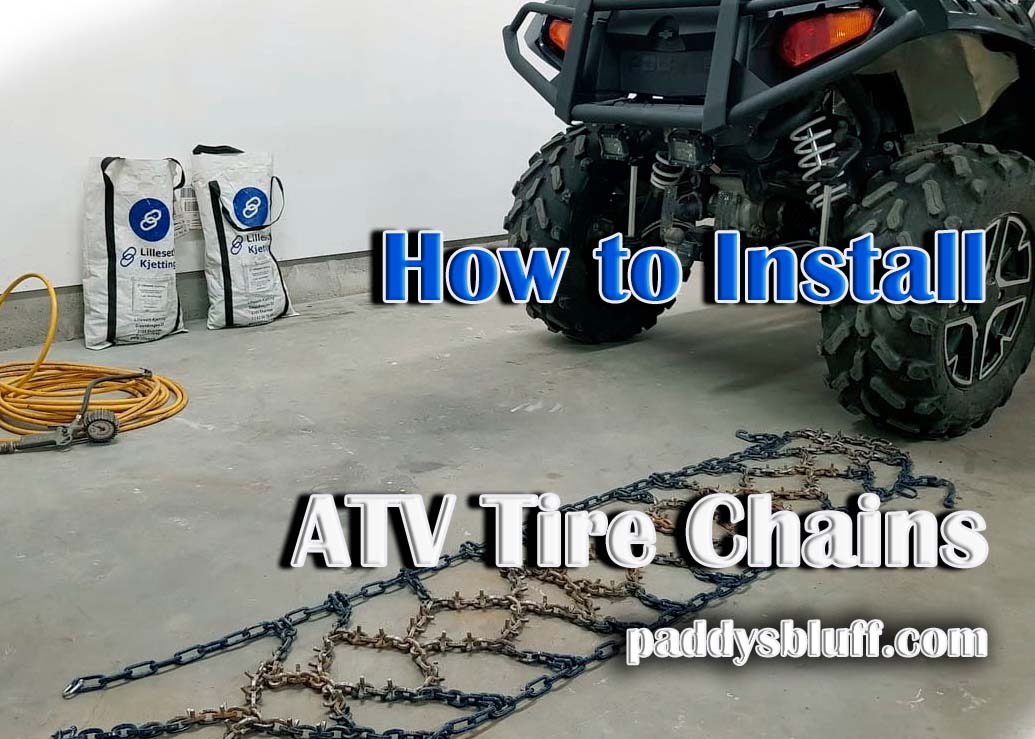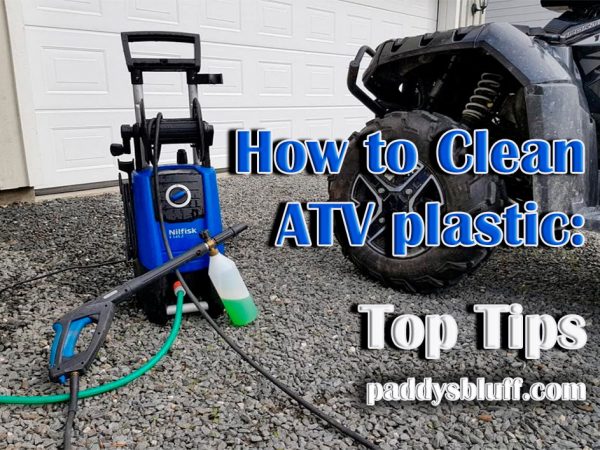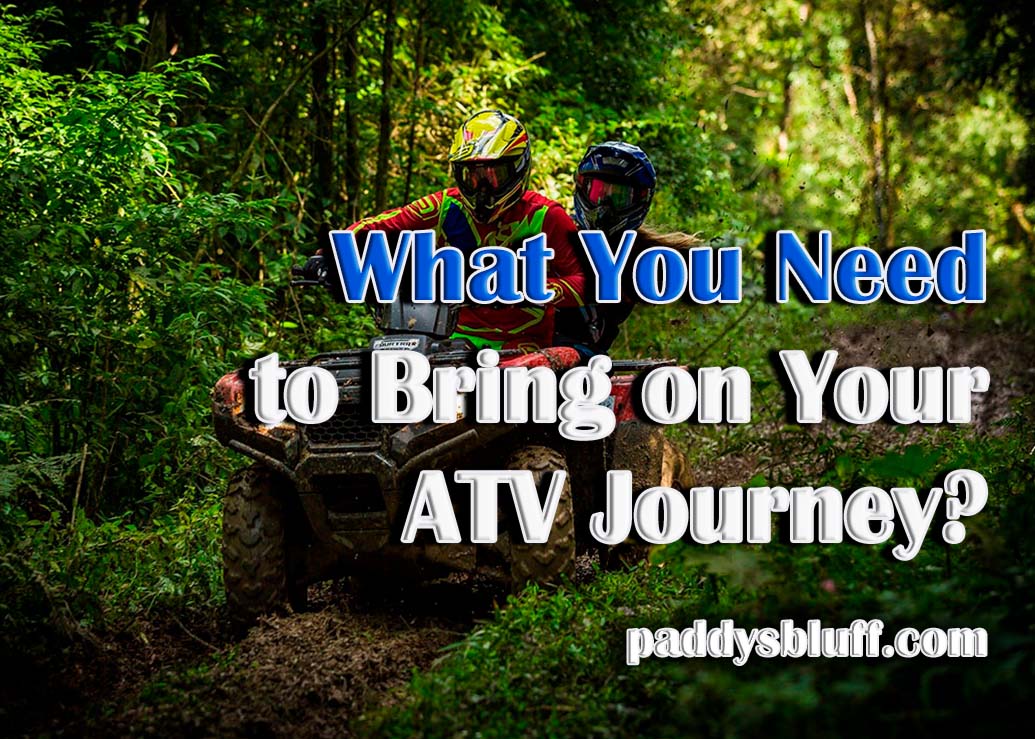
What You Need to Bring on Your ATV Journey
The #1 rule of any off-roading adventure – don’t come unprepared. While experienced drivers know this better than anyone, amateurs tend to neglect the importance of packing the essentials. A lot can happen on a journey into the wilderness, which is why it’s critical to equip the ATV properly. So, what exactly should the average all-terrain vehicle enthusiast carry?
Is it protective gear, a medkit, a GPS navigator, some tools, or extra gallons of fuel? Well, the list is pretty big, and while packing can be a bit boring at times, you can’t hit the road without it. When stuck in the middle of a “no man’s land”, you’ll most definitely appreciate a nice winch, a phone to call for help, and some snacks to fix yourself up. Alright, let’s get right to it!
Body Protection Gear
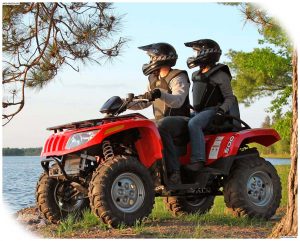 The first thing you need to worry about is your own safety. That’s why body protection gear is so important. Although ATVs aren’t the most dangerous vehicles out there, you still need to take care of yourself. Statistically, most injuries and even fatal outcomes can be avoided if the driver has proper protective clothing. I’m talking about gloves, helmets, eye goggles, and – preferably – long-sleeve shirts.
The first thing you need to worry about is your own safety. That’s why body protection gear is so important. Although ATVs aren’t the most dangerous vehicles out there, you still need to take care of yourself. Statistically, most injuries and even fatal outcomes can be avoided if the driver has proper protective clothing. I’m talking about gloves, helmets, eye goggles, and – preferably – long-sleeve shirts.
Don’t go cheap with the gloves, because you’ll be landing on your hands a lot, and a high-grade pair will be the right investment. Helmets, in turn, protect the head (the most vulnerable part of a human body). Plus, they look pretty cool. Now, if the helmet covers your eyes, there won’t be a need in any goggles. But if it’s a regular helmet, make sure to purchase a decent set of goggles. They’ll keep dust, pollen, and debris from harming your eyes.
Finally, shirts that cover not only the chest and the back but also the hands will come in handy as well, especially when driving on rocky terrain. Premium-quality shirts protect against tiny cuts (when driving through trees and bushes), bug bites, and even the UV rays.
A Proper First Aid Kit
Nobody knows what’s going to happen on the road on your next trip. Accidents happen all the time, and no matter how great your clothing and helmet are, you still need to pack a first aid kit. This is equally true for folks that use their ATVs for competitive driving, off-roading trips, and hunting. Now, you can either buy a ready-steady kit or get all the individual components separately. Make sure the kit includes:
- Band-Aids
- An antiseptic
- Adhesive tape
- Gauze roll
- A hygiene kit
These are just the essentials. If you’ve got a condition or, say, a headache, don’t forget to also pack some personal meds.
Equipment and Tools for the ATV
And what about the four-wheeler – what should you pack for the trip to “treat” your steel friend? The road can be hazardous for the ATV as well, but if you have the right tools with you, fixing it won’t be a problem. First things first, run a full diagnosis of the vehicle before embarking on an adventure. Maintenance is very important: you should always inspect the engine, battery, suspension system, and the brakes.
Still, accidents may happen, and for that, I highly recommend packing the following stuff:
- An air pump with a pressure gauge
- Jumper cables (to start the engine)
- A fire extinguisher (might be required by state law)
- Plugs for the tires
And don’t forget to grab your favorite toolkit. Mine always includes these instruments:
- A couple of wrenches
- A set of screwdrivers and pliers
- My trusty knife
- Duct tape and zip ties
- A flashlight and some batteries
Extras
If you want to be as comfortable on an off-roading/camping journey as possible, there are some extra items that will be of great help. Most importantly, pack some fresh clothes, especially socks and pants. Planning on staying for the night? Then a tent/sleeping bag should be on the list.
Means of Communication
Alright, with the basics out of the way, let’s talk about the right devices for the road. It shouldn’t really matter whether you’re riding into the sunset on your own or with a bunch of friends. Always make sure you’ve got means of communication with the outside world. And please remember that regular cell phones/smartphones might not have a strong enough signal to reach out and call for help.
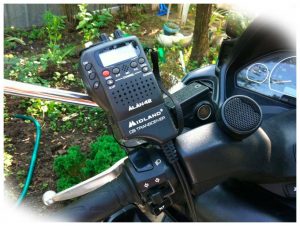 That’s why I recommend investing in a top-quality CB radio. It will “feed” from the ATV and be able to “poke through” even the densest forest, clouds, and fog, no matter how high or low you are on the ground. A GPS navigator can also save the day – it will help you get back on the road in case you get lost. Some folks prefer to go the old-school way and pack physical maps.
That’s why I recommend investing in a top-quality CB radio. It will “feed” from the ATV and be able to “poke through” even the densest forest, clouds, and fog, no matter how high or low you are on the ground. A GPS navigator can also save the day – it will help you get back on the road in case you get lost. Some folks prefer to go the old-school way and pack physical maps.
If you’re not ready to buy a CB radio, consider getting a charger for the phone. And one last thing: it would be best to keep these devices in a protective (water- and dust-proof) bag.
Some Food for the Road
Fans of ATV journeys know very well how hungry and thirsty one can get after a couple of hours in the wilderness. The rule of thumb here would be to pack food that takes little space and has lots of protein and carbs. Water is super important as well, of course. For drinking it, one single bottle will be enough. But if some cleaning and cooking will also be involved, pack at least three bottles.
A Tow Strap or a Winch
What are you gonna do when the ATV gets stuck in mud, snow, or something worse? Use a tow strap, of course! Off-roaders get stuck all the time, which is why it’s very important to have a strap to help out a fellow rider. It can also be instrumental in removing fallen trees/other obstacles on the road. And if you’ve got some big bucks to spare, you could purchase a winch.
It’s like the more advanced and more capable version of a tow strap. Plus, a winch can help you pull the four-wheeler out even when there are no friendly ATVs ready to lend a hand.
An Extra Gallon of Fuel
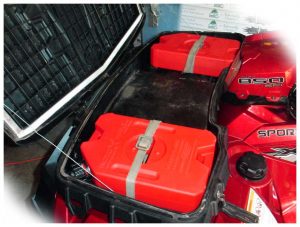 Tools, equipment, a med kit, and some food – we’ve got that on lock now. However, we’re not done with the essentials yet. Now, no matter how short or long your trip is going to be, always have at least one extra can of gas with you. There are no gas stations on off-roading trails, and without fuel for the ATV, you won’t be able to get anywhere. This will save you a long, boring, and somewhat embarrassing walk back to the camp.
Tools, equipment, a med kit, and some food – we’ve got that on lock now. However, we’re not done with the essentials yet. Now, no matter how short or long your trip is going to be, always have at least one extra can of gas with you. There are no gas stations on off-roading trails, and without fuel for the ATV, you won’t be able to get anywhere. This will save you a long, boring, and somewhat embarrassing walk back to the camp.
Besides, a completely dry gas tank can (potentially) harm the engine. And get a decent-quality gas can that’s leak-proof and easy to pour. Even if you end up not needing all the extra gas, it will give you peace of mind on the road. Plus, a fellow all-terrain vehicle owner might ask for a fill up.
Summing Up
Well, that is pretty much it! As you can see, there are a lot of things that an ATV driver should pack for the road. Tools, equipment, protective gear, food, fuel, a winch, a proper phone – all this stuff can save you a lot of energy and nerves, not to mention keep you from harm’s way out there in the middle of nowhere. So, make sure to create a routine for yourself that includes inspecting the four-wheeler, keeping it in proper shape, and packing all the essentials.
I’ve been on more ATV journeys than I can remember, but I still take the time and effort to pack everything and double-check before I hit the road. Safe travels, and enjoy your ATV!
